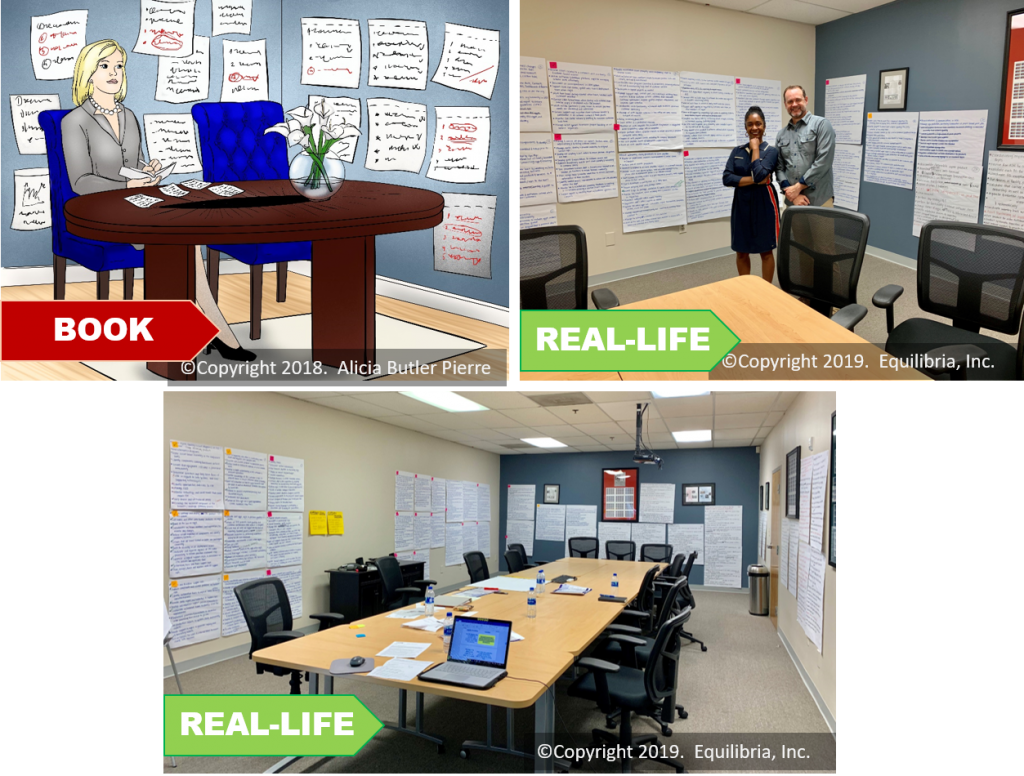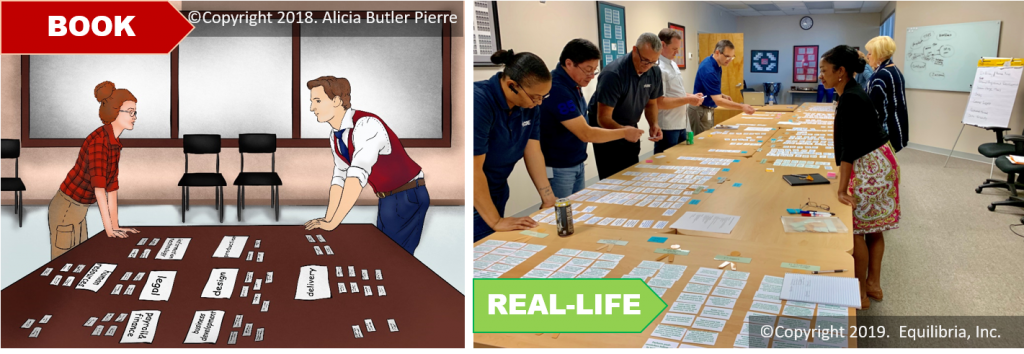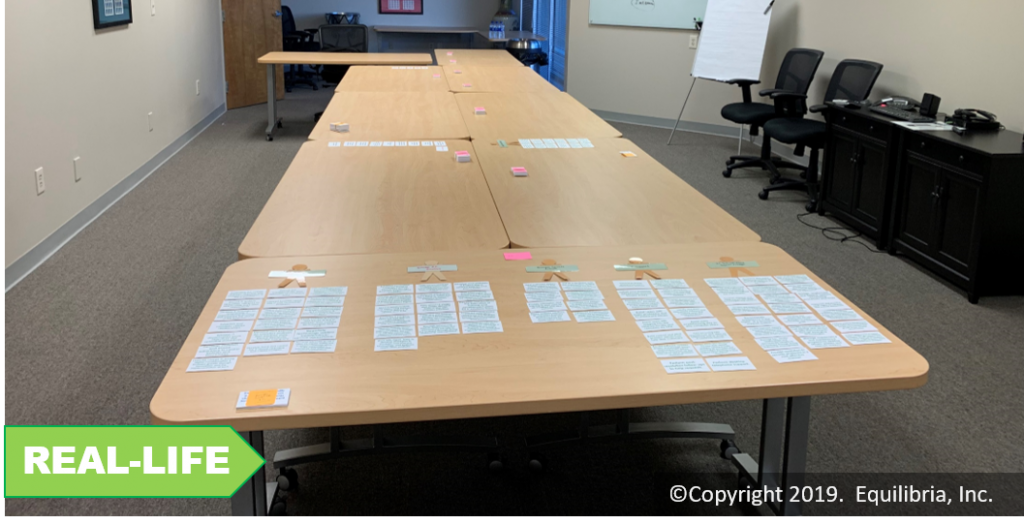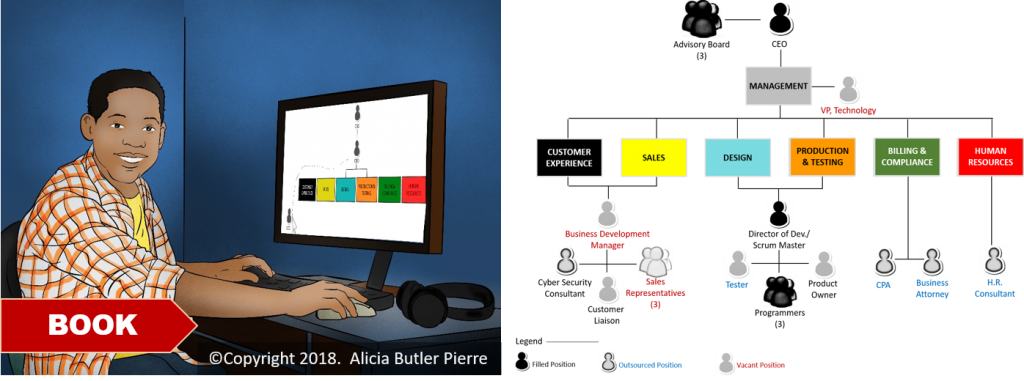When you start a business you will no doubt wear many hats. But as your business grows rapidly, you will need to hire more people. That means giving away some of those hats to new people. These new people will need to know what to do (and how).
Below are 5 steps to follow so you can delegate with confidence.
But first, let’s start with knowing when to delegate.
Calculate Operational Capacity
This is a formula for calculating your company’s capacity or operational efficiency.
Consider you own a professional services company. When you first started, you personally had the potential to work on 3 projects a month. Because you did a great job at business development, you actually secured 3 projects a month. Your capacity utilization would be at 100%.
But what if you did such a great job on these projects, that your clients gave you even more work. You’re also still doing business development and all of a sudden you find yourself in a position where you have to turn away business because you do not have the personal capacity to take on any more projects. Let’s say your potential input increases from 3 projects a month to 10. But your actual output remains at 3 projects. This decreases your capacity utilization from 100% to 30%!
It’s time to delegate my friend!
Now that you have the business volume and finances to justify delegation, you can follow these 5 steps to know exactly how to expand your team. Note that the illustrations below show a comparison of characters from my book to a real-life client.
Step 1: Determine Tasks to Perform
Gather your team into a room with empty wall space. Ask yourself and your team, “What work needs to be done?” As you all brainstorm tasks, write each one starting with an action verb onto an easel pad with adhesive-backed sheets. You’ll be amazed at how many tasks you come up with. The client (shown below in the picture) identified over 650 tasks written onto 42 easel pad sheets in two days!

Step 2: Organize Tasks into Departments
Next, transfer all of those tasks identified onto small index cards. Assemble your team again into a room with a large flat surface. Spread the cards out and begin grouping tasks with similar information together into columns. These columns now represent your company’s departments. The client shown below identified 9 distinct departments in ~2 hours.

Step 3: Assign Roles to Tasks
Once you’ve assigned all tasks to departments, focus on one department and its associated tasks. Begin assigning tasks to roles, even if those roles do not exist! I use laminated stick figures that I designed for this exercise, but you can also use a different color index card to denote a role. Write the names of existing roles in black, outsourced roles in blue, and roles to hire in red. It’s important to assign tasks to the role that should do the work. Ask yourself, “In a perfect world, if I had all the resources I needed to perform these tasks, who should ideally do this work?” The client shown below spent ~3 hours figuring this out.

Step 4: Create Job Descriptions
Now that you know the tasks to perform and the roles to perform them, create or update job descriptions. I also recommend creating job descriptions for outsourced positions.
Key elements to include:
• Role Description: an overview of the role/position.
• Company Description: tell your company’s story (it’s “why”) and describe how a particular role fits into the growth puzzle.
• Duties & Responsibilities: copy the tasks you and your team assigned to a particular role and paste it in  this section.
this section.
• Required Skills & Experience: list the ideal skills, work experience and educational background required to perform a role.
• Payrate & Benefits: be creative in the benefits your business can offer that larger organizations cannot. Benefits like remote working, 1099 vs. W2, flex-time, onsite daycare, bring your dog to work, etc. can go a long way in attracting talented people.
• Disclaimer: let applicants and vendors know that your company is growing fast and that roles and responsibilities can shift; they should be comfortable working in a fast-paced, agile and flexible work environment.
We created 74 unique job descriptions for this client with 94% of those positions already filled! Their job descriptions will primarily allow them to determine where additional training may be needed for certain roles as they compare their current skill sets to the ideal skill sets outlined in the job descriptions.
Step 5: Create an Organizational Chart
Remember the color-coding I mentioned in step 3? Use this in creating or updating your company’s org chart. Use a tool like MS PowerPoint to create rectangular boxes containing department information. Type the name of each role and place all upper management roles above a department’s box and all technician-related roles below the box. I like using people icons, but you don’t have to. Look at the illustration below from the book. The org chart includes a legend to describe which roles are filled, vacant or outsourced.
The client has actually gone through several iterations of their org chart to make sure they literally have the right roles in the right position so that when they initiate their growth strategy, they will have a solid reporting structure to support that strategy.

Watch the TV interview
So who’s this mystery “client” referenced in the above steps? It’s CDE Services – an already successful 30-year-old FinTech company that is positioning itself for a major growth spurt. Check out this recent TV interview which highlights our work together:
Keep Improving
The beauty of the steps described is that it encourages a level of teamwork, critical thinking, and transparency that may not be present at your company. By facilitating these highly visual brainstorming and resource allocation exercises, you will notice a new level of employee engagement.
You will be amazed at how your company’s new job descriptions and org chart come together to reflect your growth vision. I should note that you can expect to go through several iterations of these outputs. And that’s okay! Your business isn’t static, so why would your organizational design be? Keep tweaking and making improvements until you nail down the ideal structure. Then, revisit this structure annually.
Delegate from a position of confidence knowing exactly what you want and the parameters for each new person you add to your team.
Want support in figuring out what and how to delegate?
Book a phone consultation today or buy the book. I’ve worked on perfecting this process for the past 14 years. Trust me, it works!

Start giving away some of those hats you’re wearing. You’ll feel a lot lighter and…more profitable!












